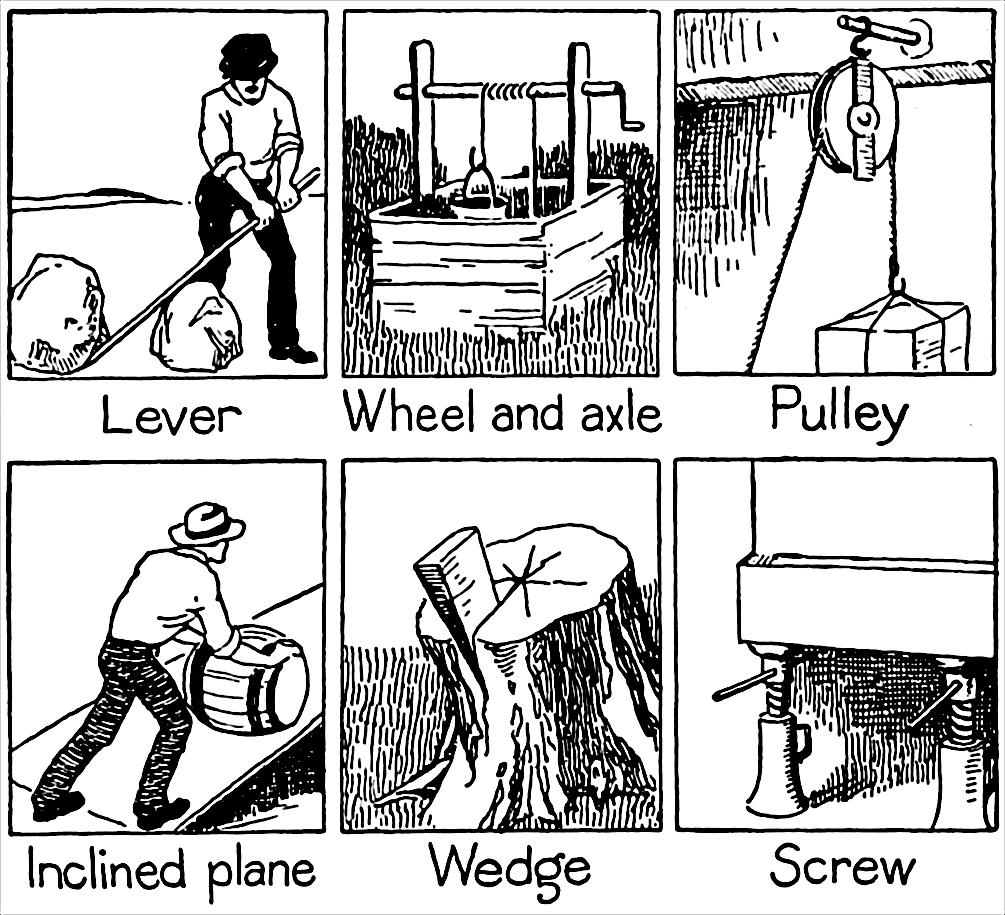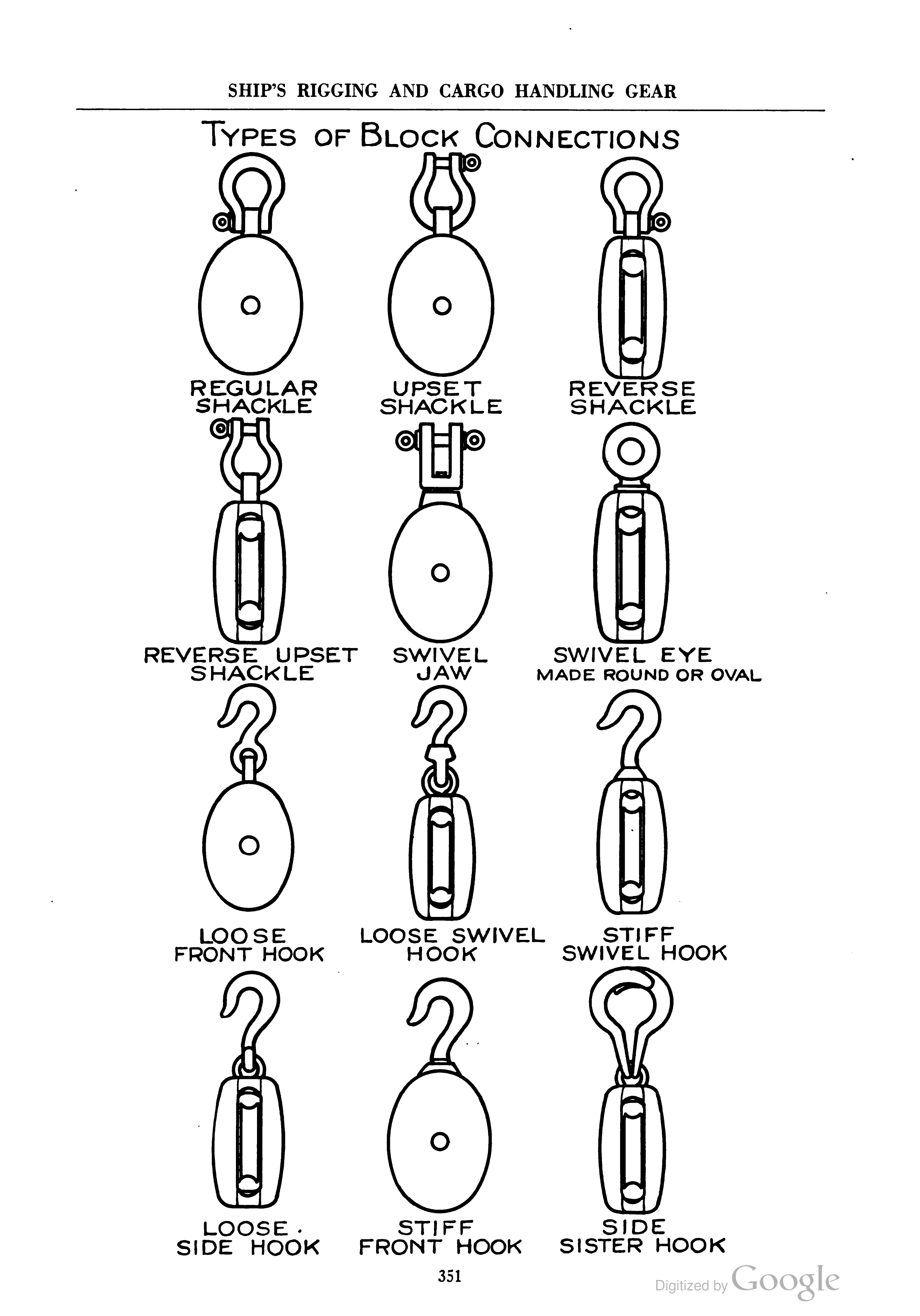|
Pulley
Sheave without a rope A pulley is a wheel on an axle or shaft enabling a taut cable or belt passing over the wheel to move and change direction, or transfer power between itself and a shaft. A pulley may have a groove or grooves between flanges around its circumference to locate the cable or belt. The drive element of a pulley system can be a rope, cable, belt, or chain. History The earliest evidence of pulleys dates back to Ancient Egypt in the Twelfth Dynasty (1991–1802 BC) and Mesopotamia in the early 2nd millennium BC. In Roman Egypt, Hero of Alexandria (c. 10–70 AD) identified the pulley as one of six simple machines used to lift weights. Pulleys are assembled to form a block and tackle in order to provide mechanical advantage to apply large forces. Pulleys are also assembled as part of belt and chain drives in order to transmit power from one rotating shaft to another. Plutarch's ''Parallel Lives'' recounts a scene where Archimedes proved the effectiveness ... [...More Info...] [...Related Items...] OR: [Wikipedia] [Google] [Baidu] [Amazon] |
Belt (mechanical)
A belt is a loop of flexible material used to link two or more rotating shafts mechanically, most often parallel. Belts may be used as a source of motion, to transmit power efficiently or to track relative movement. Belts are looped over pulleys and may have a twist between the pulleys, and the shafts need not be parallel. In a two pulley system, the belt can either drive the pulleys normally in one direction (the same if on parallel shafts), or the belt may be crossed, so that the direction of the driven shaft is reversed (the opposite direction to the driver if on parallel shafts). The belt drive can also be used to change the speed of rotation, either up or down, by using different sized pulleys. As a source of motion, a conveyor belt is one application where the belt is adapted to carry a load continuously between two points. History The mechanical belt drive, using a pulley machine, was first mentioned in the text of the ''Dictionary of Local Expressions'' by the Han ... [...More Info...] [...Related Items...] OR: [Wikipedia] [Google] [Baidu] [Amazon] |
Block And Tackle
A block and tackle or only tackle is a system of two or more pulleys with a rope or cable threaded between them, used to provide tension and lift heavy loads. The pulleys are assembled to form blocks and then blocks are paired so that one is fixed and one moves with the load. The rope is threaded through the pulleys to provide mechanical advantage that amplifies the force applied to the rope. Hero of Alexandria described cranes formed from assemblies of pulleys in the first century. Illustrated versions of Hero's ''Mechanica'' (a book on raising heavy weights) show early block and tackle systems. Overview A block is a set of pulleys or sheaves mounted on a single frame. An assembly of blocks with a rope threaded through the pulleys is called tackle. The process of threading ropes or cables through blocks is called "reeving", and a threaded block and tackle is said to have been "rove". A block and tackle system amplifies the tension force in the rope to lift heavy loads ... [...More Info...] [...Related Items...] OR: [Wikipedia] [Google] [Baidu] [Amazon] |
Mechanical Advantage
Mechanical advantage is a measure of the force amplification achieved by using a tool, mechanical device or machine system. The device trades off input forces against movement to obtain a desired amplification in the output force. The model for this is the ''law of the lever.'' Machine components designed to manage forces and movement in this way are called mechanisms. An ideal mechanism transmits power without adding to or subtracting from it. This means the ideal machine does not include a power source, is frictionless, and is constructed from rigid bodies that do not deflect or wear. The performance of a real system relative to this ideal is expressed in terms of efficiency factors that take into account departures from the ideal. Levers The lever is a movable bar that pivots on a fulcrum attached to or positioned on or across a fixed point. The lever operates by applying forces at different distances from the fulcrum, or pivot. The location of the fulcrum deter ... [...More Info...] [...Related Items...] OR: [Wikipedia] [Google] [Baidu] [Amazon] |
Ideal Mechanical Advantage
Mechanical advantage is a measure of the force amplification achieved by using a tool, mechanical device or machine system. The device trades off input forces against movement to obtain a desired amplification in the output force. The model for this is the ''law of the lever.'' Machine components designed to manage forces and movement in this way are called mechanisms. An ideal mechanism transmits power without adding to or subtracting from it. This means the ideal machine does not include a power source, is frictionless, and is constructed from rigid bodies that do not deflect or wear. The performance of a real system relative to this ideal is expressed in terms of efficiency factors that take into account departures from the ideal. Levers The lever is a movable bar that pivots on a fulcrum attached to or positioned on or across a fixed point. The lever operates by applying forces at different distances from the fulcrum, or pivot. The location of the fulcrum determi ... [...More Info...] [...Related Items...] OR: [Wikipedia] [Google] [Baidu] [Amazon] |
Simple Machine
A simple machine is a machine, mechanical device that changes the Direction (geometry) , direction or Magnitude_(mathematics) , magnitude of a force. In general, they can be defined as the simplest Mechanism (engineering) , mechanisms that use mechanical advantage (also called leverage) to multiply force. Usually the term refers to the six classical simple machines that were defined by Renaissance scientists: * Lever * Wheel and axle * Pulley * Inclined plane * Wedge (mechanical device), Wedge * Screw (simple machine), Screw A simple machine uses a single applied force to do Mechanical work, work against a single load force. Ignoring friction losses, the work done on the load is equal to the work done by the applied force. The machine can increase the amount of the output force, at the cost of a proportional decrease in the distance moved by the load. The ratio of the output to the applied force is called the ''mechanical advantage''. Simple machines can be regarded as the eleme ... [...More Info...] [...Related Items...] OR: [Wikipedia] [Google] [Baidu] [Amazon] |
Archimedes
Archimedes of Syracuse ( ; ) was an Ancient Greece, Ancient Greek Greek mathematics, mathematician, physicist, engineer, astronomer, and Invention, inventor from the ancient city of Syracuse, Sicily, Syracuse in History of Greek and Hellenistic Sicily, Sicily. Although few details of his life are known, based on his surviving work, he is considered one of the leading scientists in classical antiquity, and one of the greatest mathematicians of all time. Archimedes anticipated modern calculus and mathematical analysis, analysis by applying the concept of the Cavalieri's principle, infinitesimals and the method of exhaustion to derive and rigorously prove many geometry, geometrical theorem, theorems, including the area of a circle, the surface area and volume of a sphere, the area of an ellipse, the area under a parabola, the volume of a segment of a paraboloid of revolution, the volume of a segment of a hyperboloid of revolution, and the area of a spiral. Archimedes' other math ... [...More Info...] [...Related Items...] OR: [Wikipedia] [Google] [Baidu] [Amazon] |
Chain Drive
Chain drive is a way of transmitting mechanical power from one place to another. It is often used to convey power to the wheels of a vehicle, particularly bicycles and motorcycles. It is also used in a wide variety of machines besides vehicles. Most often, the power is conveyed by a roller chain, known as the drive chain or transmission chain, passing over a sprocket, with the teeth of the gear meshing with the holes in the links of the chain. The gear is turned, and this pulls the chain putting mechanical force into the system. Another type of drive chain is the Morse chain, invented by the Morse Chain Company of Ithaca, New York, United States. This has inverted teeth. Sometimes the power is output by simply rotating the chain, which can be used to lift or drag objects. In other situations, a second gear is placed and the power is recovered by attaching shafts or hubs to this gear. Though drive chains are often simple oval loops, they can also go around corners by placing ... [...More Info...] [...Related Items...] OR: [Wikipedia] [Google] [Baidu] [Amazon] |
Block (sailing)
In sailing, a block is a single or multiple pulley. One or a number of '' sheaves'' are enclosed in an assembly between ''cheeks'' or ''chocks''. In use, a block is fixed to the end of a line, to a spar, or to a surface. A line (rope) is ''reeved'' through the sheaves, and maybe through one or more matching blocks at some far end, to make up a tackle. The ''purchase'' of a tackle refers to its mechanical advantage. In general the more sheaves in the blocks that make up a tackle, the higher its mechanical advantage. The matter is slightly complicated by the fact that every tackle has a ''working end'' where the final run of rope leaves the last sheave. More mechanical advantage can be obtained if this end is attached to the moving load rather than the fixed end of the tackle. There are various types of blocks that are used in sailing. Some blocks are used to increase mechanical advantage and others are used simply to change the direction of a line. A ''ratchet block'' turn ... [...More Info...] [...Related Items...] OR: [Wikipedia] [Google] [Baidu] [Amazon] |
Rope
A rope is a group of yarns, Plying, plies, fibres, or strands that are plying, twisted or braided together into a larger and stronger form. Ropes have high tensile strength and can be used for dragging and lifting. Rope is thicker and stronger than similarly constructed cord, String (structure), string, and twine. Construction Rope may be constructed of any long, stringy, fibrous material (e.g., rattan, a natural material), but generally is constructed of certain natural fibre, natural or synthetic fibre, synthetic fibres. Synthetic fibre ropes are significantly stronger than their natural fibre counterparts, they have a higher tensile strength, they are more resistant to rotting than ropes created from natural fibres, and they can be made to float on water. But synthetic ropes also possess certain disadvantages, including slipperiness, and some can be damaged more easily by UV light. Common natural fibres for rope are Manila hemp, hemp, linen, cotton, coir, jute, straw, an ... [...More Info...] [...Related Items...] OR: [Wikipedia] [Google] [Baidu] [Amazon] |





